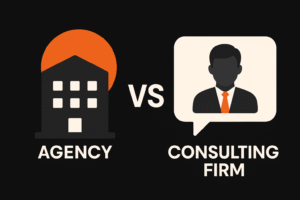Strategy Execution Failure: Why 90% of Business Plans Fail

Thomas Edison famously said that “vision without execution is hallucination.” In today’s business landscape, this observation has never been more brutally accurate. Despite investing millions in strategic planning, 67% of well-formulated strategies fail due to poor execution, not flawed thinking. Recent research reveals that companies achieve only 63% of the financial performance their strategies promise, with some studies suggesting the failure rate reaches as high as 90%. This execution gap costs businesses up to 10% of their annual revenue—meaning a $10 billion enterprise could be hemorrhaging $1 billion annually simply because they cannot execute what they’ve planned.
The strategy-execution divide represents one of the most persistent and costly challenges in modern business, transcending industries, company sizes, and geographies. From tech giants like Nokia and BlackBerry to retail powerhouses like Bed Bath & Beyond and Sears, the graveyard of failed businesses is filled not with companies that lacked vision, but with those that couldn’t translate their strategies into reality. Understanding why this gap exists and how to bridge it has become a critical competitive advantage in an era where 74% of executives lack faith that their company’s transformative strategies will succeed.
The brutal mathematics of strategic failure
The statistics surrounding strategy execution paint a sobering picture of organizational dysfunction. Only 10% of organizations achieve at least two-thirds of their strategic objectives, while 61% of executives admit their firms struggle to bridge the gap between strategy formulation and day-to-day implementation. Perhaps most alarming is that only 5% of employees understand their company’s strategy, creating a cascade of misalignment that dooms even the most brilliant plans from the start.
This failure manifests in concrete financial terms. Harvard Business Review research demonstrates that strategic misalignment wastes 60% of a company’s resources, while McKinsey studies show that mismanaged strategy execution costs companies up to 10% of their annual revenue. The Marakon Associates study of 197 companies found a consistent 37% gap between expected and actual results from strategic plans—a shortfall that compounds year after year.
The leadership dimension reveals an even more troubling pattern. 85% of leadership teams spend less than one hour per month discussing strategy, while 49% of organizations have leaders who dedicate only one day per month to reviewing strategic implementation. This inattention becomes systemic when only 27% of employees and 42% of managers have access to their company’s strategic plan. Without visibility or understanding, execution becomes impossible regardless of strategy quality.
McKinsey’s most recent Strategy Method Survey from late 2024 shows the problem intensifying rather than improving. Only 21% of executives reported their strategies passed four or more quality tests—a 40% decline from 2008-2010. Meanwhile, 42% of strategists struggle to achieve their desired level of impact, and only about 50% of executives say their companies effectively align budgets with corporate strategies. The machinery of strategy execution appears to be breaking down across the business world.
When brilliant strategies meet organizational reality
Peloton’s spectacular collapse between 2021 and 2022 exemplifies how execution failures can destroy even well-funded companies with initially sound strategies. The connected fitness company pursued an aggressive vertical integration strategy, targeting 100 million subscribers and investing $420 million to acquire equipment manufacturer Precor plus planning a $400 million Ohio factory. The strategy made sense on paper: control the entire value chain to ensure quality and margins.
But Peloton’s execution proved catastrophic. The company severely overestimated post-pandemic demand, leading to massive overproduction and inventory piling up in warehouses. When demand collapsed, Peloton had to pause production across all products while simultaneously servicing the debt from its manufacturing acquisitions and dealing with quality control issues that resulted in recalling 125,000 treadmills after injuries and a child’s death. The timing couldn’t have been worse—scaling up operations just as the pandemic boost ended. Peloton’s stock crashed from $162.72 in December 2020 to under $20 by 2022, an 88% decline. The company posted net losses of $2.83 billion in fiscal year 2022, more than it lost in the previous five years combined.
Bed Bath & Beyond’s bankruptcy in April 2023 tells an equally instructive story about execution timing and internal chaos. CEO Mark Tritton’s transformation strategy to replace big-name brands with private labels and modernize stores wasn’t inherently flawed. But launching private labels during a pandemic supply chain crisis when customers desperately wanted familiar brands proved disastrous. The company replaced beloved Ralph Lauren towels and Calphalon pans with unknown store brands like Everhome and Nestwell that customers rejected. As one industry analyst noted, “The strategy itself wasn’t necessarily wrong, but the execution was very inappropriate.”
The execution breakdown extended far beyond product selection. Bed Bath & Beyond spent $600 million on stock buybacks instead of investing in its turnaround or paying down $1.4 billion in debt. Major suppliers stopped shipping products due to payment concerns. Employees reported attending meetings where completely different strategic directions were presented each time, creating organizational whiplash that made consistent execution impossible. The result: bankruptcy with $18.65 billion in debts against $15.06 billion in assets, closure of all 360 Bed Bath & Beyond and 120 Buy Buy Baby stores, and 33,000 jobs lost.
The classic failures that business schools still teach
While recent failures capture headlines, the most instructive examples come from companies that dominated their industries for decades before execution gaps destroyed them. These cases reveal patterns that transcend specific technologies or market conditions, pointing to fundamental organizational and leadership failures.
Kodak’s descent from photography pioneer to bankruptcy represents perhaps the most studied example of awareness without action. The company invented the digital camera in 1975 but deliberately suppressed the innovation to protect its $16 billion film business. Despite producing internal reports on future market trends, management dismissed digital photography as non-disruptive. Kodak executives remained focused on short-term profit goals tied to film sales, even as the market shifted beneath them. The company wasted $5.1 billion acquiring pharmaceutical company Sterling Drug instead of investing in digital capabilities. Multiple restructurings with 15,000+ layoffs in 2004 alone created instability that prevented coherent digital strategy. When Kodak finally filed for bankruptcy in January 2012, it had lost $6.8 billion in its final decade.
Blockbuster’s story carries a particularly painful irony. The video rental giant didn’t lack a viable response to Netflix—CEO John Antioco developed one between 2004-2007, discontinuing late fees and launching “Total Access” that gained subscribers faster than Netflix. But investors opposed the $400 million investment costs and franchisees feared cannibalization, leading to Antioco’s firing in 2007. His replacement, Jim Keyes, reversed the strategy and refocused on retail, continuing to open expensive physical stores as the market went digital. Blockbuster had the right strategy but couldn’t manage the internal opposition required to execute it. The company filed for bankruptcy in September 2010, with the last store closing in 2014.
Nokia’s collapse from 40% global mobile phone market share to 3% demonstrates how engineering-centric culture can prevent execution even when leadership sees the threat. The company remained committed to its inferior Symbian operating system despite iOS launching in 2007 and Android in 2008. Internal departmental competition created silos that prevented coherent responses. The 2011 partnership with Microsoft for Windows Phone disrupted existing operations while never exceeding 3% market share. Nokia had the resources and awareness but its hierarchical structure, consensus-driven decisions, and resistance to cannibalize profitable Symbian business made swift execution impossible. Microsoft acquired Nokia’s phone business in 2013 for $7.2 billion, then wrote off $7.6 billion by 2015.
Why execution consistently defeats strategy
The root causes of strategy-execution gaps fall into three interconnected categories: structural problems, cultural dysfunction, and leadership failures. Organizations typically experience all three simultaneously, creating a perfect storm of execution paralysis.
Structural barriers manifest most clearly in how strategy gets translated—or fails to translate—into operational reality. Traditional planning processes move in one direction: top-down. As Wharton professor Lawrence Hrebiniak observes, strategy gets created when leaders “know the least” about ground-level realities, then gets handed down as mandates. High-level strategic planning doesn’t break into actionable steps that frontline employees can execute. Only 33% of senior executives’ direct reports clearly understand connections to corporate priorities, dropping to just 16% for frontline supervisors. This comprehension cascade doom execution before it begins.
Resource allocation failures compound the structural problems. Despite strategic planning exercises that identify priorities, only 50% of executives say their companies align budgets with corporate strategies. Resources get “peanut buttered” across initiatives rather than concentrated on strategic priorities. Companies confuse activity with progress, spreading talent and capital too thinly to achieve meaningful results. Just over 50% transform strategic goals into three-to-seven-year strategic financial plans, leaving a critical gap between aspiration and committed resources.
Cultural dysfunction represents the deeper barrier that structural fixes cannot address. London Business School’s David Lewis explains that leaders focus on tangible elements like organizational structures and processes because “addressing the intangibles is really hard.” But the biggest barriers to execution are employee mindsets and interactions—the soft factors that resist systematic solutions. Individuals resist change not from obstinacy but because they possess local knowledge about why current approaches exist. When incentive systems reward behaviors that contradict stated strategies, Hrebiniak’s observation becomes reality: “We hope for A but reward B.”
Sears exemplifies how cultural toxicity can destroy a once-dominant retailer. After hedge fund manager Eddie Lampert acquired the company through a 2005 Kmart merger, he split Sears into 30 autonomous competing divisions—each with separate executives, budgets, and profit-and-loss statements. The divisions competed against each other for resources rather than collaborating to serve customers. IT systems fragmented into 30 different EDI systems with massive duplication. The company closed product testing labs to cut costs, leading to sales of dangerous appliances that required massive recalls. Deteriorating stores featured poor lighting (because buying bulbs wasn’t cost-effective), handwritten signs, and empty shelves. As one Columbia Business School professor characterized it: “Short-sighted stupidity that financial-based executives make…outright incompetent leadership.” Sears filed for bankruptcy on its 125th anniversary in October 2018 after losing $6 billion in five years.
Leadership failures manifest in three distinct patterns across failed executions. First, executives demonstrate what consultant Stephen Blandino calls “lazy leading”—unwillingness to invest the time required for execution discipline. Larry Bossidy spent 40% of his time on people development at AlliedSignal, but most CEOs delegate execution to subordinates while focusing on external stakeholder relations. Second, leaders prioritize short-term profits over long-term survival because compensation structures reward quarterly results. Every failed company—Kodak, Blockbuster, Nokia, BlackBerry—knew about the threats but couldn’t sacrifice current earnings to invest in transformation. Third, leaders fail to manage internal political opposition. Blockbuster had a viable strategy that franchisees and investors killed. WeWork’s board failed to challenge CEO Adam Neumann’s eccentric leadership until the company had burned through billions.
Lessons from catastrophic execution failures across industries
Different industries face distinctive execution challenges, yet the fundamental patterns repeat with remarkable consistency. The retail sector struggles most with customer disconnect and over-expansion. Target Canada’s 2011-2015 disaster demonstrates the danger of ambitious timelines without operational readiness. The retailer attempted to open 124 stores rapidly with glitchy software that prevented inventory management. Shelves remained chronically empty at grand openings while the company lacked executives with Canadian market experience. After investing $7 billion, Target closed all Canadian operations in 2015, putting 17,600 people out of work.
JCPenney’s near-death experience under Ron Johnson shows the peril of ignoring your customer base. The former Apple executive eliminated sales and coupons for “everyday low pricing” without any testing, famously declaring “We didn’t test at Apple.” Comparable sales fell 25% in 2012 as longtime customers fled. The company posted net losses of $795 million in 2012, $1.3 billion in 2013, and $717 million in 2014, nearly destroying the 114-year-old retailer within 36 months. Johnson’s strategy might have worked for a different customer base, but execution that ignores who actually shops in your stores inevitably fails.
The technology sector’s execution failures typically involve denial of disruption despite internal awareness. IBM continued allocating resources to mainframes as personal computing exploded, losing industry standing to Dell and HP. The HP-Compaq merger in 2002 collapsed because it occurred without allowing employees to adjust to different company cultures or comparing system software for compatibility. Yahoo spent a decade in identity crisis with seven different CEOs, each bringing a different vision. The company rejected financing Google in 1998, offered $3 billion for Google in 2002 (rejected), and outsourced search to Google from 2000-2004, jump-starting its primary competitor. Yahoo acquired Broadcast.com for $5.7 billion and GeoCities for $4.5 billion at the bubble peak without integration strategies, then bought Tumblr for $1.1 billion in 2013 and sold it for $3 million in 2019. The company sold to Verizon for $4.83 billion in 2017—once valued at over $125 billion.
Healthcare represents perhaps the most challenging execution environment. McKinsey research shows 70% of hospital and health system strategic initiatives fail, breaking into three categories: failure to launch due to resistance, failure to sustain because initiatives don’t integrate into daily operations, and failure to scale by not involving everyone. The Healthcare.gov launch in 2013 exemplified large-scale public sector execution failure with 55 contractors, no single point of accountability, inadequate testing, and massive technical problems on day one. The website couldn’t handle traffic and crashed frequently. Typical government statistics applied: 94% of large federal IT projects were unsuccessful in the prior decade. Eventually fixed at a cost of $1.5-2.1 billion, but the political and reputational damage was catastrophic.
Financial services execution failures often stem from skills gaps and technology misalignment. Currently 87% of financial services companies experience or expect skills gaps as innovations like blockchain and AI create demand for capabilities current workforces lack. Green Tree Financial’s 2008 bankruptcy demonstrated the danger of high-risk business models with poor customer execution—extending 30-year mortgages on depreciating trailers while using aggressive collection tactics backed by Lehman Brothers. Enron’s 2001 collapse showed how execution without internal controls and ethical guardrails leads to fraud masquerading as strategy. Management substituted accounting manipulations for operational performance until the entire edifice collapsed.
Building the bridge between strategy and execution
Successful companies approach strategy execution as an integrated discipline rather than treating formulation and implementation as separate activities. Roger Martin’s work with Procter & Gamble demonstrates this integration through his Strategy Choice Cascade, which includes capabilities and management systems as core strategic choices rather than “execution details.” Martin argues persuasively that “you cannot talk about execution separately from strategy—strategy is an integrated set of choices that compels a desired customer action.” This reframing eliminates the artificial distinction that allows leaders to blame execution for their strategic failures.
Larry Bossidy and Ram Charan’s research at AlliedSignal, Honeywell, and GE established that execution requires discipline across three core processes: people, strategy, and operations. The people process evaluates individuals accurately, creates leadership pipelines, and links people to strategy across near-term (0-2 years), mid-term (2-5 years), and long-term (5+ years) horizons. Leaders should spend 40% of their time on selection, appraisal, and development. The strategy process transforms plans into action frameworks that leaders can rely upon, with strategies reviewed three times annually and refined as conditions change. The operations process breaks long-term outputs into short-term targets and forces integrated decisions across the organization. Execution culture requires robust dialogue based on intellectual honesty and realism rather than political posturing.
McKinsey’s Strategy Method identifies 12 building blocks across design, mobilization, and execution phases, with research showing that “Strategy Champions”—companies moving to or maintaining top-quintile economic profit—excel particularly in the mobilization phase. This phase bridges knowing and doing by ensuring the right talent is empowered on strategic decisions, translating strategy into granular initiatives, reallocating resources boldly, and embedding strategy into plans and budgets. Strategy Champions are 1.7 times more likely to make strategic decisions at the right speed and actively drive performance rather than passively tracking it.
Communication systems separate successful from failing executions. While 73% of successful companies have formal mechanisms to communicate strategy, failed companies treat strategy as confidential leadership information. CEOs must personally explain strategy in small groups—town halls and mass communications don’t create understanding. Regular strategic conversations of 2-4 hours weekly or biweekly keep strategy alive rather than relegated to annual planning sessions. When employees understand not just what the strategy is but why it matters and how their work connects, execution becomes possible.
Resource reallocation represents a critical execution capability. Companies that actively shift resources to highest-value opportunities outperform those that practice “peanut buttering.” This requires creating detailed curves of investable opportunities rather than just business unit allocations, using voting or matrix methods to make tough prioritization choices. Organizations that enhance execution capacity increase profitability by 77% according to Gartner research, because resources flow to strategic priorities rather than getting trapped in legacy activities.
Microsoft’s transformation under Satya Nadella demonstrates bold execution in volatile environments. Rather than protecting Windows revenues, Nadella unified the organization around becoming cloud-first, even though this cannibalized existing profitable businesses. The company adapted its strategy muscles to high-uncertainty contexts by aligning on challenges with conviction while maintaining ability to adjust quickly. Best Buy’s turnaround under Hubert Joly applied his “bicycle theory”: if you try to steer a bicycle from standstill, you fall, but if the bicycle is moving—even in the wrong direction—you can course correct. Keep moving, test assumptions, learn rapidly, and adjust.
What separates winners from the 90% who fail
The dividing line between execution success and failure comes down to treating strategy as a living system rather than an annual event. Successful companies document strategic assumptions explicitly so they can test them systematically. When results disappoint, they distinguish between execution problems and strategic hypothesis failures. Amazon’s approach of six-page memos for major decisions forces clear thinking, while its distinction between Type 1 decisions (irreversible, requiring careful deliberation) and Type 2 decisions (reversible, requiring speed) ensures appropriate decision velocity.
Accountability must be unambiguous. Nvidia assigns a clear “pilot in command” for each initiative—one person whose career rises or falls on results. Research shows 95% of leaders say clear accountability improves strategic plan completion, yet many organizations still rely on committees and shared responsibility that diffuse ownership. Making strategy everyone’s job through aligned goals, development plans, and compensation transforms execution from leadership mandate into organizational capability.
The most sophisticated executors adapt their approach to environmental uncertainty. In stable, predictable environments, strategy champions focus on identifying discontinuities and exploring bold moves—Walmart’s supply chain innovation or Disney’s content strategy exemplify this classical approach. In highly uncertain environments, the adaptive approach of rapid experimentation, learning, and scaling what works proves superior. Companies that match their execution muscles to environmental demands dramatically outperform those using one-size-fits-all methodologies.
The hallucination trap and how to escape it
Strategy without execution truly does equal hallucination—a vivid vision divorced from reality that wastes billions in resources and destroys organizations that should thrive. The 60-90% failure rate persists not because strategies are inherently flawed but because organizations cannot bridge the gap between formulation and implementation. This gap costs the typical $10 billion enterprise roughly $1 billion annually in lost performance and wasted resources.
The evidence across decades and industries points to three fundamental truths. First, awareness of threats doesn’t drive action—every failed company knew what was coming but organizational inertia, cultural resistance, and leadership risk aversion prevented response. Second, the distinction between strategy and execution is false and destructive—they represent integrated choices at all organizational levels that must be treated holistically. Third, execution is not about working harder but about building systems, aligning resources, communicating relentlessly, and creating cultures that reward results rather than planning.
Companies that master execution gain enormous competitive advantage precisely because the capability remains so rare. While competitors develop sophisticated strategies that languish unimplemented, execution masters compound modest advantages through disciplined action. They spend 40% of leadership time developing people, maintain weekly strategic conversations, reallocate resources boldly, test assumptions systematically, and create accountability that drives results. Most importantly, they recognize that strategy is not what you write in planning documents but what you actually do—and that execution is not a separate activity but the very essence of strategic leadership.
READY TO
EXECUTE?
Stop reading about strategy. Start executing it with consultants who deliver results.
30 DAYS FREE · NO CONTRACTS · GUARANTEED RESULTS


